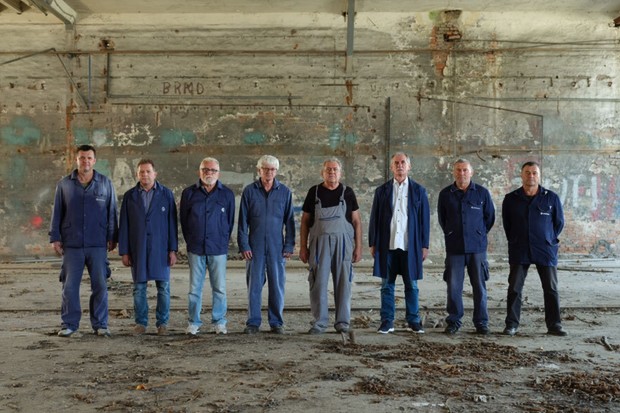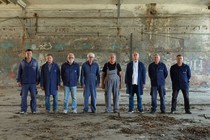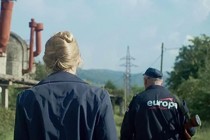SARAJEVO 2023 Documentary Competition
Review: What's to Be Done?
- Croatian documentary master Goran Dević returns with a powerful, artistic investigative film that charts the human toll of government corruption and disdain for the ordinary worker

During the ten years it took to make What's to Be Done? [+see also:
trailer
interview: Goran Dević
film profile], Croatian documentary director Goran Dević has churned out four feature-length films, including the DOK Leipzig prizewinner On the Water [+see also:
film review
trailer
film profile]. Now, his new film has finally bowed at Sarajevo, and it is a gripping, bitter and tragic narrative that did actually take a decade to unravel. Employing exciting meta elements, with a headstrong protagonist and a complex political background, it tells the universal story of workers’ rights, corruption and governments’ disdain for ordinary people through the case of the 120-year-old Gredelj train factory.
Our hero is Željko, head of the union at the company, and the film opens in 2012, after his deputy commits suicide. A PTSD-addled war veteran, he blamed himself for the factory's downfall. Now the government wants to push them into bankruptcy, without a clear reason. This is far from the only company that amassed debt following Croatia's transition from socialist Yugoslavia to the murky waters of unbridled capitalism, but while many others are bailed out, Gredelj, which belongs to the state-run Croatian Railways company, is not.
At the beginning, Željko and his colleagues are considering the strategy that would serve them best in negotiating with the state, to at least get salaries that would keep them going for another month. They have just produced a new, state-of-the-art train, and they decide to deliver it, hoping it will improve their chances at the bargaining table. So, the train's test trip to Vienna is a source of both pride and anxiety, intensely obvious on Željko's face, despite his resoluteness.
When they get back to Zagreb, there is a bankruptcy trustee waiting for them with a smug, arrogant smile on his face – so characteristic of petty men who have managed to seize power, and so typical in small countries in transition. A thousand workers, including Željko, are laid off, and about 500 stay on, on one-month contracts. This creates a rift between coworkers who shared the good and the bad for decades. Željko, like many others, is fired just a few years short of his retirement.
Forty-one months after the bankruptcy order, he pins his hopes on the elections: if the right-wing coalition wins, he expects changes in his company's favour. They do win, but it's not much of a spoiler to reveal that nothing happens. Gredelj is old news, and now it's this party's turn to skim the top off more investments and destroy more burdensome companies with their pesky workers.
As the story developed over the course of ten years, Dević had the chance to create a truly dense, complicated and very emotional film, and to craft a particularly touching meta moment in the last act. In 2021, the former workers are sitting in a large hall, watching the first half of what will eventually become this film, which is followed by a heartbreaking conversation. There are many teary eyes and bitter smiles, but it is particularly hard for Željko to see himself triumphant at the right-wing party's election HQ.
With this scene and two performative segments that bookend the film, set to Arvo Pärt's spiritual "Adam's Lament", What's to Be Done? could be described as a docu-fiction hybrid, but these devices in fact just deepen its emotional value and bring the human toll closer to the viewer. At its heart, it is an artistic, investigative documentary with a powerful activist streak, and it is what Dević is best known for. It may easily be his most accomplished film to date.
What's to Be Done? is a production by Zagreb-based Petnaesta umjetnost.
Did you enjoy reading this article? Please subscribe to our newsletter to receive more stories like this directly in your inbox.




















